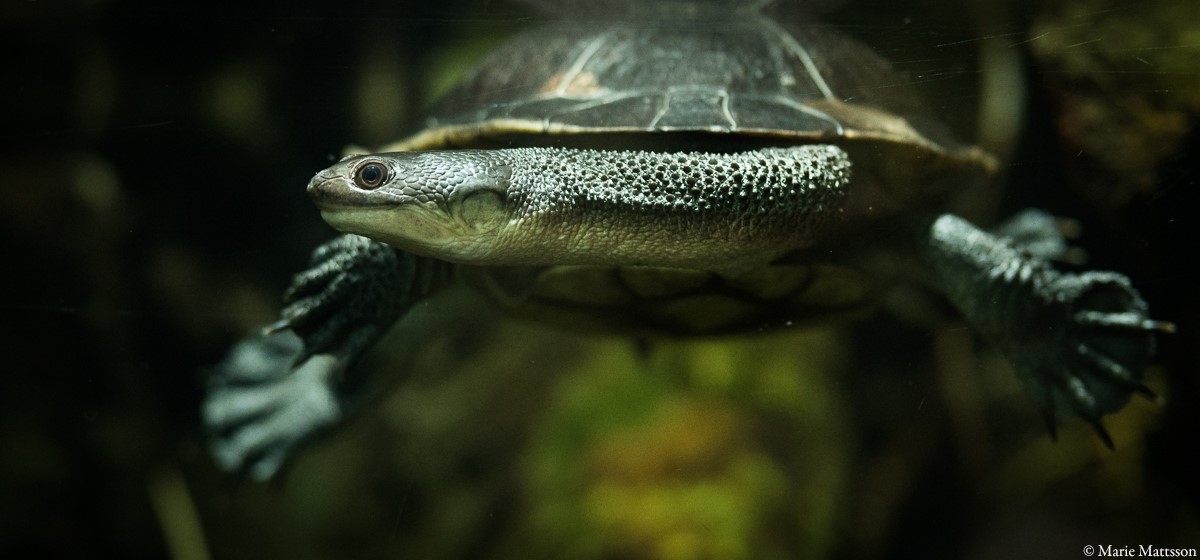Roti Island snake-necked turtle conservation
The Roti Island snake-necked turtle has a small range and is found only on the small island of Roti and on the northern tip of East Timor in Indonesia. The species is divided into two subspecies Chelodina mccordi mccordi on Roti and Chelodina mccordi timorensis on East Timor. The species is classified as Critically Endangered (CR) on the international red list and the situation is very serious. The population on Roti is believed to be extinct in the wild, and on East Timor only one known population remains. The species is on the list of the world's 25 most endangered turtle species.
The reasons behind the reduction are mainly due to the illegal pet trade. Described as a separate species as recently as 1994, the Roti Island snake-necked turtle soon became highly sought after by collectors around the world. Within just five years, the population on Roti had been decimated and is now considered functionally extinct on the island.
Another reason for the species' decline is that the species' natural habitats, shallow lakes and waterways, have gradually disappeared and been converted into farmland. From 1996 to 2016, Roti lost 70% of its freshwater areas through massive landscape conversions for agricultural activity. In addition, invasive species such as pigs, dogs, livestock and predatory fish have also affected the population of Roti Island snake-necked turtles as nests have been trampled and newly hatched hatchlings eaten.
Roti Island snake-necked turtle hatchling.
To conserve this highly endangered turtle, a breeding facility has been built in Kupang, West Timor with the long-term goal of reintroducing a genetically and demographically healthy population of Roti Island snake-necked turtle on Roti.
What we do at Nordens Ark
Nordens Ark has kept Roti Island snake-necked turtle since 2008 and the species is part of Nordens Ark's conservation project "An Ark for the world's turtles", a sanctuary and future breeding center for endangered turtles. We also coordinate the European breeding program and take great responsibility for the species as we maintain one of the largest breeding groups in Europe.
Turtles at Nordens Ark's breeding facility.
Updates from the project – January 2025
Nordens Ark has initiated a genetic analysis of the European population to determine which subspecies are being kept in Europe. This work is crucial to ensuring that individuals with the correct genetic background are selected for future reintroductions.



